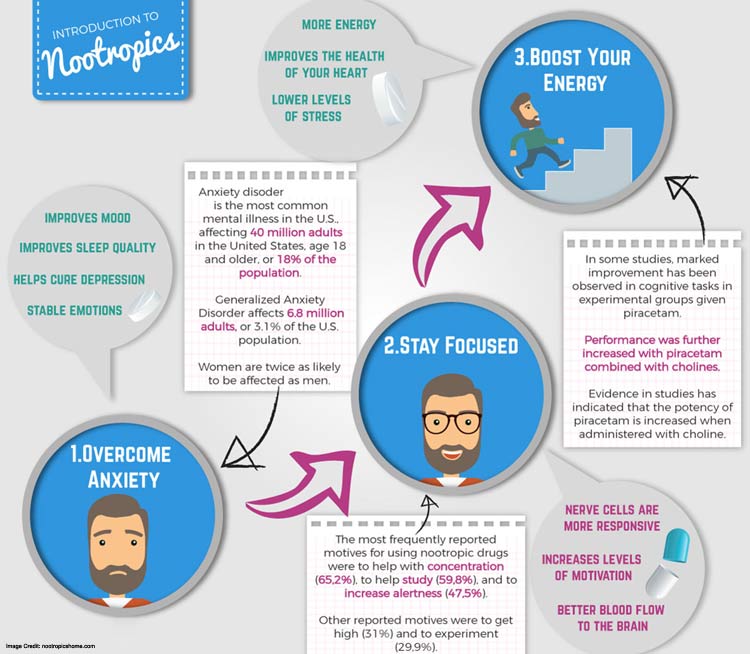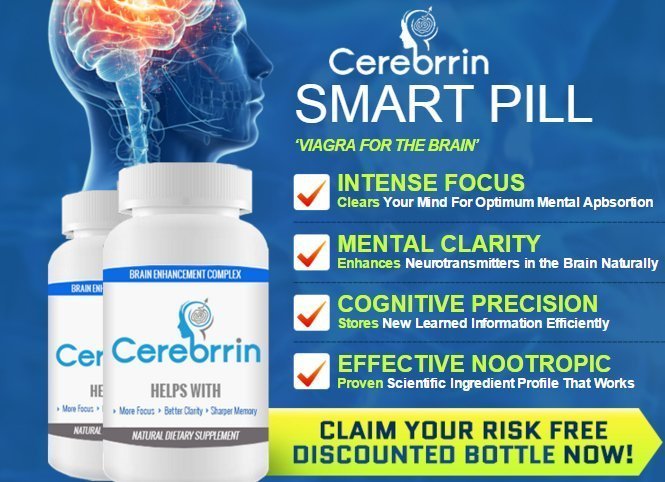You many have heard about nootropics but are a little curious as to how they work. Nootropics are essentially brain supplements and drugs that work on groups of signaling compounds known as neurotransmitters. Examples of such supplements are optimind and Geniux which are widely used as brain boosters. Certain nootropics may work to influence how different neurotransmitters interact with receptors in the brain. There are many types of nootropics but the most popular work on specific groups of neurotransmitters

Stimulants vs. Nootropics
Stimulants are not considered nootropics. Like nootropics, stimulants also work on certain neurotransmitters and receptor groups. One may feel like stimulants actually increase their productivity because it is true. Certain stimulants like coffee for instance, help to block a chemical known as adenosine which inhibits the central nervous system.coffee is a stimulant not a nootropic
Some may dispute caffeine as a nootropic however it does fall somewhat into this category. Adenosine blocks the effects of monoamine neurotransmitters as well as two different nootropic
neurotransmitters. Unlike most nootropics, caffeine is often followed by a crash. This is one main difference between caffeine and nootropics that make it a stimulant rather than full blown nootropic.
Then there are other stimulants that work off amphetamines. Many of these amphetamines are being referred to as “smart drugs” because many students are using them illegally to help them study and do better in exams. It is important not to confuse smart drugs with nootropics. Most smart drugs are actually just stimulants.
Stimulant amphetamines can help one focus and get more done however they have a big downside because they have a really bad side effects and tolerance profile. Nootropics on the other hand are usually very well tolerated and do not have many side effects or withdrawal symptoms.
Amphetamines mostly work on monoamine neurotransmitters which do have some nootropic actions. Unfortunately, they do not have many effects of other important neurotransmitters like acetylcholine and glutamate. The neurotransmitters acetylcholine and glutamate help with focus but also contribute to other areas of cognitive function like: memory, learning and perception.
The Main Difference…
The main difference between nootropics and stimulants are side effects as well as the psychoactive profiles. Stimulants generally have a large amount of side effects and downsides. Apart from the bad side effects, one can also experience tolerance, addiction and with drawl with stimulants. In the end you may become more productive on stimulants however you may find become addicted and worse off mentally due to these effects.
Here are some of the bad side effects associated with stimulants:
Irritability
Insomnia
Headache
Nausea
Anxiety
Paranoia
Nootropics have much less of these side effects because they don’t act to be psychoactive on the central nervous system. They are generally not psychoactive and work to increase neurotransmitters that actually work to improve cognitive function. Also, since nootropics are not psychoactive, they produce less noticeable side effects and do not generally have a crash that follows your body’s elimination of the substance.
Another excellent thing to note about nootropics is that some actually have neuroprotective effects. Of course not all nootropics have these effects but many have been shown in studies to have great effects in reducing oxidative stress. Oxidative stress has been known to influence receptors and destroy important parts in the brain that relate to cognitive function. This is thought to play a very large role in diseases like Alzheimer’s. Stimulants never have a neuroprotective trait.
Nootropic Neurotransmitters: Acetylcholine vs. Monoamines
Like previously stated, monoamine neurotransmitters have great effects on the central nervous system. Most substances that work on monoamines have a higher risk of being psychoactive, addictive and producing tolerance. This is the route most stimulants have and therefore they are more dangerous. Sure, they may be great at influencing focus however their effects may wane and produce more unwanted effects over time.
monoamine neurotransmitters
Many other nootropics work on different neurotransmitters. Acetylcholine is an example of a very powerful nootropic neurotransmitter. This is because aceylcholine is involved in every movement and bodily function. It is also extremely important in cognitive functions like learning, memory and focus.
Unlike stimulants, boosting acetylcholine does not have psychoactive properties and can help to produce nootropic effects with very little problems. Many types of nootropics work on the acetylcholine system differently.
Here are some examples of nootropics that work to produce cognitive effects through the acetylcholine system. We highly recommend that if you buy these products you go to reputable supplier like this one. The cheapest route to go is to buy powders or you may decide to cap them yourself.
These are types of supplements or drugs that work in some way to synthesize or create acetylcholine within the body. Some are much more efficient than others at creating acetylcholine
Choline
Lecithin
Phosphatidylcholine
DMAE
Acetyl-L-Caritnine
Centrophenoxine
Citicoline
Alpha GPC
The next group of nootropics influence acetylcholine by stimulating the acetylcholine receptors. Generally, these produce much better nootropic effects than the first group. The first group of acetylcholine boosters may not show much cognitive benefit on their own. For this reason, many combine an acetylcholine booster with an acetylcholine receptor stimulator. This is said to produce synergistic effects on cognitive function.
Piracetam
Aniracetam
Oxiracetam
Phenylpiracetam
Pramiracetam
Nicotine (very short half-life and elimination)
Noopept
The last group of nootropics also affects the acetylcholine system by helping to eliminate the enzyme that breaks down acetylcholine. This enzyme is known as acetylcholinesterase and the nootropics are known as acetylcholinesterase. One very popular Alzheimer’s medication that is also available over the counter known as Galantamine follows this nootropic action.
Another very popular nootropic herb that produces the same effects as galantamine is known as huperzine A which is a type of Chinese moss. Both huperzine A and galantamine are created from herbal products and are similarly effective. Many popular nootropic formulations like Alpha Brain take advantage of these supplements.
Building a Nootropic Stack
Many decide to build a nootropic stack. This is about finding a nootropic supplement that works best for their brain chemistries as in case of Optimind. Some people will stack all three of these categories together to get the best results. Many will stack different racetams together to get the most out of the effects. Why not try nootropics today. They are way better than stimulants and may subtly change how you produce in life.

